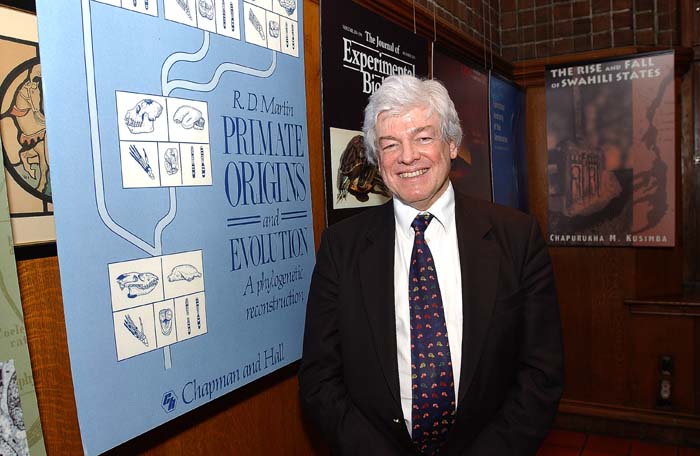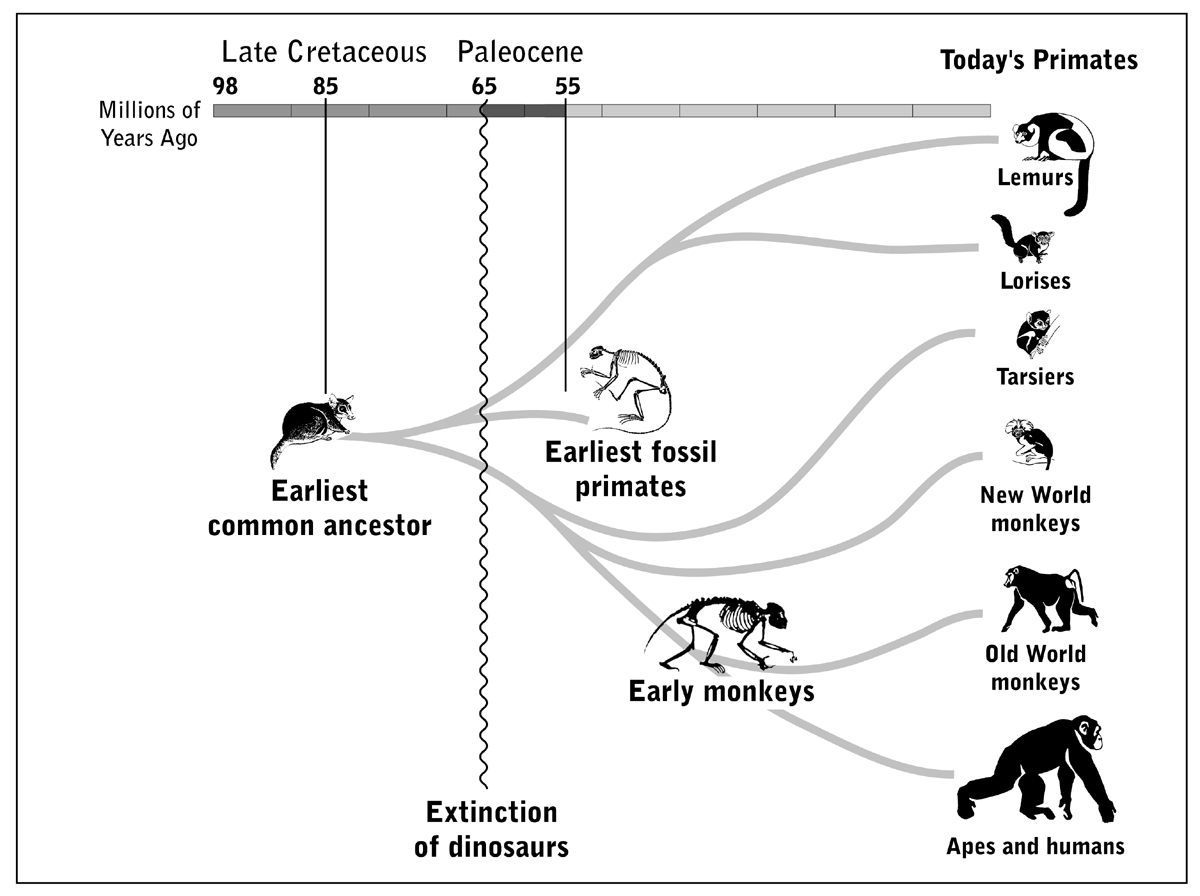 DETERMINING
DATES FOR PRIMATE ORIGINS AND DIVERSIFICATION
DETERMINING
DATES FOR PRIMATE ORIGINS AND DIVERSIFICATION
 DETERMINING
DATES FOR PRIMATE ORIGINS AND DIVERSIFICATION
DETERMINING
DATES FOR PRIMATE ORIGINS AND DIVERSIFICATION
Robert D. Martin, Provost, Academic Affairs, The Field Museum, Chicago
Molecular evidence indicates early origination and diversification of living primates, in which case continental drift in the late Cretaceous / early Tertiary may be relevant. However, the earliest known undoubted fossil primates are only 55 Ma old, and the standard view is that primates originated no earlier than 65 Ma ago. Similar conclusions have been reached for most orders of placental mammals, and it is widely accepted that their origin and diversification followed the extinction of dinosaurs at the end of the Cretaceous. A parallel explanation applies to the adaptive radiation of modern birds. The view that recognizable primates first appeared no earlier than 65 Mya reflects the common procedure of dating the origin of a group from the first known fossil representative. If there are many gaps in the record, the first known fossil representative is likely to be much younger than the actual first emergence, and bias in the record may entail additional error. A statistical approach allowing for gaps in the fossil record suggests that primates originated about 90 Ma ago. This has direct implications for the common practice of calibrating molecular trees with a single date for the first known fossil of a group, including inferences regarding the timing of human evolution. Major gaps undoubtedly exist not only for primates but also in many other parts of the mammalian fossil record, such as that for bats. Modern primates are essentially confined to tropical/subtropical forests in southern continents. Yet the earliest known primates occur in the northern continents and there is little overlap in distribution. One explanation for this is that the likelihood of fossil preservation/discovery has been far greater in the north and that the known record simply reflects a transitory northward expansion of tropical/subtropical primates when average temperatures were notably higher during the Eocene.
